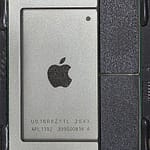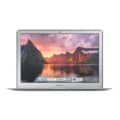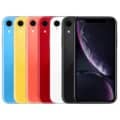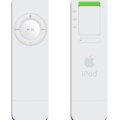- All Apple Devices
- iPad
- Apple iPad Air 5th Generation (2022)
Apple iPad Air 5th Generation (2022)


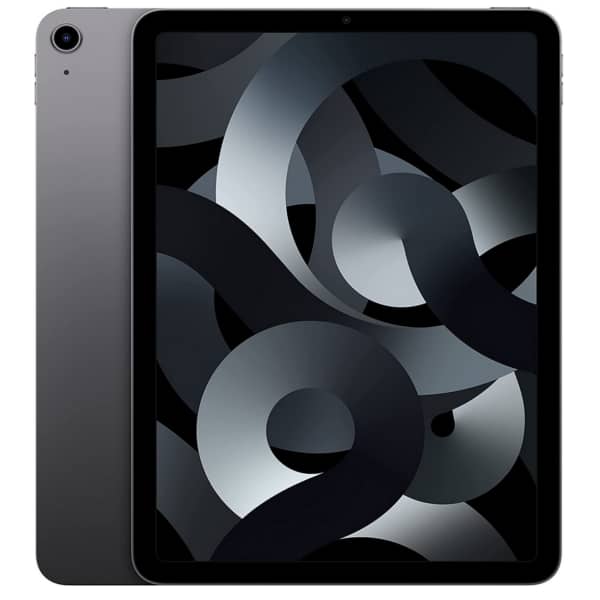
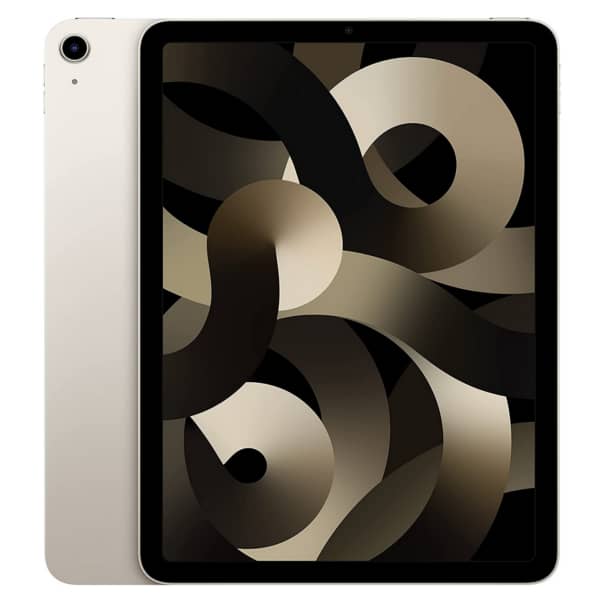



Apple iPad Air 5th Generation (2022)
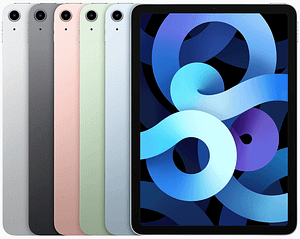
Product Brand: Apple
4.3
Pros
- High Res Large 10.9 inch Liquid Retina display
- A15 Bionic chip
- Supports 5G connectivity.
- Slim and lightweight design with a premium feel.
- Touch ID
- Stereo speakers deliver high-quality audio with spatial audio support.
- Supports Apple Pencil 2 and Magic Keyboard for enhanced productivity.
- 12MP rear-facing camera with True Tone flash and 4K
- 7MP front-facing camera for high-quality selfies and video calls.
- USB-C port for faster charging and easy connectivity with other devices.
- Available in multiple colors and storage options, up to 256 GB.
Cons
- Higher price point compared to some other iPads.
- No Face ID facial recognition technology, only Touch ID.
- No water resistance or dustproofing rating
- No headphone jack
Apple iPad Air 5th Generation (2022) Specs and Features
The Apple iPad Air 5th Generation (2022) is a lightweight and powerful tablet that boasts impressive specs and features. It has a stunning 10.9-inch Liquid Retina IPS LCD display that delivers a high resolution of 1640 x 2360 pixels and 500 nits of brightness.
The tablet is powered by an Apple A15 Bionic chipset and a hexa-core CPU that provides smooth and lag-free performance. It comes with 4GB of RAM and is available in 64GB and 256GB storage options.
The iPad Air 5th Generation (2022) has a single rear camera with a 12MP sensor that captures high-quality images and videos. The rear camera features dual-pixel PDAF, HDR, and Dolby Vision HDR up to 30fps, while the front camera has a 12MP sensor with an ultrawide lens and gyro-EIS. The tablet has a large 8134 mAh battery that supports USB-C fast charging, allowing you to charge the device up to 50% in just 30 minutes.
Other features of the iPad Air 5th Generation (2022) include Touch ID, which provides secure and easy access to your device, as well as stereo speakers that deliver impressive sound quality. The tablet runs on iPadOS 15.1, the latest operating system from Apple, and offers Wi-Fi 802.11
Design
- Dimensions: 247.6 x 178.5 x 6.3 mm (9.75 x 7.03 x 0.25 in)
- Weight: 458 g (Wi-Fi), 460 g (5G) (1.01 lb)
- Colors: Space Gray, Silver, Rose Gold, Green, Sky Blue
Display
- Size: 10.9 inches, 366.5 cm2 (~82.9% screen-to-body ratio)
- Resolution: 1640 x 2360 pixels (~264 ppi density)
- Display Type: Liquid Retina IPS LCD, 500 nits (typ)
Hardware
- Chipset: Apple A15 Bionic
- CPU: Hexa-core (2×3.22 GHz Avalanche + 4xXeon)
- GPU: Apple GPU (5-core graphics)
- Storage: 64GB, 256GB
- RAM: 4GB
Cameras
- Rear Camera: 12 MP, f/1.8, (wide), 1/3″, 1.22µm, dual pixel PDAF, HDR, [email protected]/30/60fps, [email protected]/60/120/240fps, HDR, Dolby Vision HDR (up to 30fps), stereo sound rec.
- Front Camera: 12 MP, f/2.4, 122˚ (ultrawide), 1/3.6″, Face detection, HDR, [email protected]/60fps, gyro-EIS
Battery
- Type: Li-Po 8134 mAh, non-removable
- Charging: USB-C Fast charging 20W, 50% in 30 min (advertised)
Other Features
- Sensors: Touch ID fingerprint sensor integrated into the top button, accelerometer, gyro, compass, barometer
- Speakers: Stereo speakers
- Operating System: iPadOS 15.1
- Connectivity: Wi-Fi 802.11 a/b/g/n/ac/6, dual-band, hotspot, Bluetooth 5.2, GPS, 5G capable
- Ports: USB-C 3.1
- Support for the second-generation Apple Pencil
- Compatibility with the Magic Keyboard, Smart Keyboard Folio, and Smart Folio covers
Price
The iPad Air 5th Gen (2022) Wi-Fi only starts at $599 for the 64GB model and $749 for the 256GB model. The Wi-Fi + Cellular model starts at $729 for the 64GB model and $879 for the 256GB model.
Overall, the iPad Air 5th Gen (2022) is a powerful and versatile tablet that offers excellent performance, a beautiful display, and a wide range of features. It is an excellent choice for anyone looking for a high-end tablet that is both powerful and portable.
Full Technical Specifications
General
| Device Type | Tablet Computer |
| Models |
A2589, A2591 Also known as Apple iPad Air 5, iPad Air (5th generation) |
| Announced | 18 March, 2022 |
| Released | 18 March, 2022 |
| Status | Available |
| Predecessor | iPad Air (4th generation) |
| Generation | 5th |
Design
| Type Design Type called form factor refers to a mobile phone's size, shape, and style as well as the layout and position of major components of phone. There are three major form factors seen in mobile phones => bar phones, folding phones and sliding phones. | Bar |
| Width |
247.6 mm (millimeters) 24.76 cm (centimeters) 0.812 ft (feet) 9.748 in (inches) |
| Height |
178.5 mm (millimeters) 17.85 cm (centimeters) 0.586 ft (feet) 7.028 in (inches) |
| Thickness |
6.1 mm (millimeters) 0.61 cm (centimeters) 0.02 ft (feet) 0.24 in (inches) |
| Volume |
269.6 cm³ (cubic centimeters) 16.37 in³ (cubic inches) |
| Weight |
460 g (grams) 1.01 lbs (pounds) 16.23 oz (ounces) 461 g (Wi-Fi) / 462 g (5G) (1.02 lb) |
| Protection |
Glass front Aluminum back Aluminum frame |
| Colors |
Space Gray Starlight Pink Purple Blue |
Network
| SIM SIM (Subscriber Identity Module) is a small card that contains mobile network subscriber's account information. This allows the phone using the card to attach to a mobile network. The SIM card is most commonly associated with GSM and UMTS mobile networks. Moving a SIM card from one phone to another allows a subscriber to switch mobile phones without having to contact their mobile network carrier. SIM cards can also be used by a phone to store limited amounts of data, such as phone numbers and text messages. | Nano SIM |
| Number of SIM cards | 1 |
| GSM |
GSM 850 MHz (B5) GSM 900 MHz (B8) GSM 1800 MHz (B3) GSM 1900 MHz (B2) |
| UMTS (3G) |
UMTS 850 MHz (B5) UMTS 900 MHz (B8) UMTS 1700 MHz (B4) UMTS 1900 MHz (B2) UMTS 2100 MHz (B1) |
| LTE (4G) |
LTE-FDD 700 MHz (B12) LTE-FDD 700 MHz (B13) LTE-FDD 700 MHz (B14) LTE-FDD 700 MHz (B17) LTE-FDD 700 MHz (B29) LTE-FDD 800 MHz (B20) LTE-FDD 850 MHz (B5) LTE-FDD 850 MHz (B18) LTE-FDD 850 MHz (B19) LTE-FDD 850 MHz (B26) LTE-FDD 900 MHz (B8) LTE-FDD 1500 MHz (B11) LTE-FDD 1700 MHz (B4) LTE-FDD 1700 MHz (B66) LTE-FDD 1800 MHz (B3) LTE-FDD 1900 MHz (B2) LTE-FDD 1900 MHz (B25) LTE-FDD 2100 MHz (B1) LTE-FDD 2600 MHz (B7) LTE-TDD 1900 MHz (B39) LTE-TDD 2000 MHz (B34) LTE-TDD 2300 MHz (B40) LTE-TDD 2500 MHz (B41) LTE-TDD 2600 MHz (B38) |
| 5G NR |
5G-FDD 700 MHz (n28) 5G-FDD 800 MHz (n20) 5G-FDD 850 MHz (n5) 5G-FDD 900 MHz (n8) 5G-FDD 1800 MHz (n3) 5G-FDD 1900 MHz (n2) 5G-FDD 2100 MHz (n1) 5G-TDD 2300 MHz (n40) 5G-TDD 2500 MHz (n41) 5G-TDD 2600 MHz (n38) 5G-TDD 3500 MHz (n78) 5G-TDD 3700 MHz (n77) 5G-TDD 4700 MHz (n79) |
Display
| Display Type Display Technology => A number of display technologies and types used in mobile phones => TFT (Thin Film Transistor), IPS (In-Place Switching), OLED (Organic Light Emitting Diode), AMOLED (Active-Matrix Organic Light-Emitting Diode), Super AMOLED (an even advanced version of AMOLED), Resistive Touchscreen (Resistive touchscreens contain two layer of conductive material with a very small gap between them which acts as a resistance), Capacitive Touchsceen (Capacitive touchscreen technology consists of a layer of glass coated with a transparent conductor) | Liquid Retina IPS LCD, 500 nits (typ) |
| Size | 10.9 inch |
| Resolution | 1640 x 2360 pixels |
| Display Colors Display Colors is refers to the number of different shades of colors that the screen is capable of displaying => 64K colors, 256K colors and 16 million colors, Obviously 16M is highest available range of colors and better than others. | 24 bit, 16777216 colors |
| Aspect Ratio | 1.439:1 |
| Display area | (~81.3% screen-to-body ratio) |
| Pixel Density Pixel Density (PPI) is refers to the concentration of pixels on a particular display, measured in pixels per inch (ppi). Pixel density is calculated by dividing the diagonal pixel resolution of a display by its diagonal size, higher pixel density better display quality. | 264 PPI density |
| Display Protection Display Protection => Gorilla Glass is a special alkali-aluminosilicate glass shield with exceptional damage resistance that helps protect mobile displays from scratches, drops, and bumps of everyday use, It is always better to go for a smartphone with Gorilla Glass for that added protection and peace of mind. |
Scratch-resistant glass Oleophobic coating |
| Features |
Capacitive Multi-touch Scratch resistant Liquid Retina display True Tone display Fully laminated display Wide Color display (P3) Antireflective coating Oleophobic (lipophobic) coating 500 cd/m² |
Media
| Audio File Formats |
AAC (Advanced Audio Coding) AAC+ / aacPlus / HE-AAC v1 AMR / AMR-NB / GSM-AMR (Adaptive Multi-Rate, .amr, .3ga) AMR-WB (Adaptive Multi-Rate Wideband, .awb) eAAC+ / aacPlus v2 / HE-AAC v2 FLAC (Free Lossless Audio Codec, .flac) MIDI MP3 (MPEG-2 Audio Layer II, .mp3) OGG (.ogg, .ogv, .oga, .ogx, .spx, .opus) WMA (Windows Media Audio, .wma) WAV (Waveform Audio File Format, .wav, .wave) AIFF |
| Video File Formats |
3GPP (3rd Generation Partnership Project, .3gp) AVI (Audio Video Interleaved, .avi) H.263 H.264 / MPEG-4 Part 10 / AVC video QuickTime (.mov, .qt) MPEG-4 |
| FM Radio | No |
| Loudspeaker | Yes, with stereo speakers |
| 3.5mm Audio jack | No |
| Audio Features |
Loudspeaker Stereo speakers Dual microphones |
Rear/Main Camera
| Number of cameras | 1 |
| Sensor type | CMOS BSI (backside illumination) |
| Main cameras | 12 MP, f/1.8, (wide), 1/3", 1.22µm, dual pixel PDAF |
| Aperture | f/1.8 |
| Number of lenses | 5 |
| Image Resolution |
4032 x 3024 pixels 12.19 MP (megapixels) |
| Video Resolution |
3840 x 2160 pixels 8.29 MP (megapixels) |
| Video FPS | 60 fps (frames per second) |
| Other features |
Autofocus Continuous autofocus Continuous shooting Digital zoom Digital image stabilization Geotagging Panorama HDR Touch focus Face detection White balance settings ISO settings Exposure compensation Self-timer Scene mode Macro mode RAW Noise reduction Hybrid IR filter |
Front/Selfie Camera
| Number of cameras | 1 |
| Main cameras |
12 MP, f/2.4, 122˚ (ultrawide) |
| Sensor type | CMOS BSI (backside illumination) |
| Image Resolution |
4032 x 3024 pixels 12.19 MP (megapixels) |
| Video Resolution |
1920 x 1080 pixels 2.07 MP (megapixels) |
| Video FPS | 60 fps (frames per second) |
| Other features |
HDR Digital image stabilization Self-timer Exposure compensation Face detection Center Stage |
Software
| Operating System OS => Every computer system run on a base software called Operating System (OS). Operating System controls all basic operations of the computer (such as smartphone, PDAs, tablet computers and other handheld devices). The Operating System allows the user to install and run third party applications (apps), apps are used to add new functionality to the device. | iPadOS 15.4, up to iPadOS 15.5, planned upgrade to iPadOS 16 |
| User Interface UI or user interface of a device is the look and feel of the on-screen menu system. How it works, its color scheme, how it responds to button presses, all of these things are part of the user interface. | Apple iPad OS |
Hardware
| Chipset Chipset is a group of integrated circuits designed to perform one or a more dedicated functions, often with real time computing constraints, Popular smartphones are equipped with more advanced embedded chipsets that can do many different tasks depending on their programming. | Apple M1, 16-core Neural Engine |
| CPU CPU (Central Processing Unit) mostly known as processors, CPU processes instructions in order to carry out certain functions that make your device operate properly. Processors are often described as the brain of computers, smartphones and tablets, Smartphones and tablets rely on processors to carry out their every task, Processors are an incredibly important factor in selecting any type of computing device, including your smartphone. | Octa-core |
| CPU bits | 64 bit |
| CPU cores | 8 |
| GPU GPU (Graphics Processing Unit) is a single-chip processor designed to rapidly manipulate and alter memory to accelerate the creation of images in a frame buffer intended for output to a display, This includes things such as lighting effects, object transformations, and 3D motion. | Apple GPU (8-core graphics) |
| GPU cores | 8 |
| RAM (Memory) RAM (Random Access Memory) is a type of computer memory that can be accessed randomly, any byte of memory can be accessed without touching the preceding bytes that allows information to be stored and accessed quickly from random locations. RAM is the most common type of memory found in computer systems, smartphones, tablets and other electronic devices. | 8 GB |
| Internal Storage Internal Storage is a data storage space (flash memory) mostly used in smartphones, tablets and other electronic devices where operating system, apps, music, photos, videos, files and other user data Is stored. | 64/256 GB |
| Card Slot Memory Card Slot is a special slot for inserting a memory card. Memory cards allow you to expand the phone's built-in memory, A memory card (sometimes called a flash memory card or a storage card) is a small storage medium used to store data such as text, pictures, audio, and video, for use on small, portable or remote computing devices such as mobile phones, mp3 players, digital cameras. | No |
| Sensors Sensors are electronic components that detects and responds to some type of input from the physical environment. The specific input could be light, heat, motion, moisture, pressure and location, The output is generally a signal that is converted to use in computing systems, a location sensor, such as a GPS receiver is able to detect current location of your electronic device. |
Proximity Light Accelerometer Compass Gyroscope Barometer Fingerprint Side-mounted fingerprint sensor Three‐axis gyro |
Connectivity
| Bluetooth Version | 5.0 |
| Bluetooth Features Bluetooth is a wireless communications technology for exchanging data between mobile phones, headsets, computers and other network devices over short distances without wires, Bluetooth technology was primarily designed to support simple wireless networking of personal consumer devices. |
A2DP (Advanced Audio Distribution Profile) LE (Low Energy) |
| Infrared Infrared connectivity is an old wireless technology used to connect two electronic devices. It uses a beam of infrared light to transmit information and so requires direct line of sight and operates only at close range. | No |
| Wi-Fi Wi-Fi is a popular wireless networking technology using radio waves to provide high-speed network connections that allows devices to communicate without cords or cables, Wi-Fi is increasingly becoming the preferred mode of internet connectivity all over the world. |
802.11a (IEEE 802.11a-1999) 802.11b (IEEE 802.11b-1999) 802.11g (IEEE 802.11g-2003) 802.11n (IEEE 802.11n-2009) 802.11n 5GHz 802.11ac (IEEE 802.11ac) Dual band Wi-Fi Hotspot 802.11ax HT80 with MIMO |
| USB | USB Type-C 3.1 Gen2, DisplayPort, magnetic connector |
| GPS GPS The Global Positioning System is a satellite-based radio navigation system, GPS permits users to determine their position, velocity and the time 24 hours a day, in all weather, anywhere in the world, In order to locate your position, your device or GPS receiver must have a clear view of the sky. |
GPS A-GPS GLONASS |
| NFC NFC (Near field communication) is a set of standards for smartphones and similar devices to establish peer-to-peer radio communications with each other by touching them together or bringing them into proximity, usually no more than a few inch. | |
| HDMI HDMI (High-Definition Multimedia Interface) is a compact audio/video interface for transferring uncompressed video data and compressed or uncompressed digital audio data from a HDMI-compliant source device to a compatible computer monitor, video projector, digital television, or digital audio device. | No |
Battery or Power
| Battery Type Battery Type => Cell phones run on various kinds of batteries depending on the manufacturer, phone size or shape and features. There are basically four types of cell phone batteries => Lithium Polymer, Lithium Ion, Nickel Metal Hydride and Nickel Cadmium. | Li-Ion (Lithium Ion) |
| Capacity Battery Capacity is a measure (typically in Amp-hr) of the charge stored by the battery, and is determined by the mass of active material contained in the battery. The battery capacity represents the maximum amount of energy that can be extracted from the battery under certain conditions. | 7606 mAh (28.93 Wh) |
| Placement | Non-removable |
Disclaimer Note
We can not guarantee that the information on this page is 101% correct.

